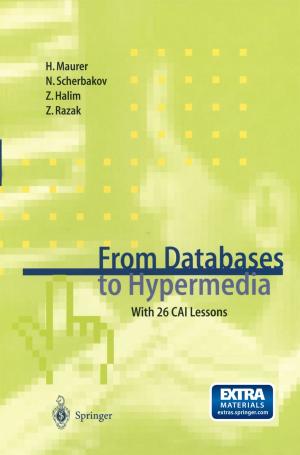Biological Basis of Oncologic Thermotherapy
Nonfiction, Health & Well Being, Medical, Specialties, Radiology & Nuclear Medicine, Oncology| Author: | P. Vaupel, G.M. Hahn, C. Streffer | ISBN: | 9783642749391 |
| Publisher: | Springer Berlin Heidelberg | Publication: | December 6, 2012 |
| Imprint: | Springer | Language: | English |
| Author: | P. Vaupel, G.M. Hahn, C. Streffer |
| ISBN: | 9783642749391 |
| Publisher: | Springer Berlin Heidelberg |
| Publication: | December 6, 2012 |
| Imprint: | Springer |
| Language: | English |
Studies on the effects of hyperthermia have aroused great interest in recent years. On the one hand, it has been demonstrated. that hyperthermia may be a useful treatment modality for tumors, in combination with ionizing radia tion or cytotoxic drugs. On the other hand, it is of great scientific interest to study the effects of increased temperature on biological systems. Although hyperthermia has been used in the treatment of cancer for cen turies, its therapeutic success was doubtful. However, since it has been shown that radiation-induced cell killirtg can be remarkably enhanced by hyperthermia, many investigations have been performed with cells in vitro, tumors in situ, and normal tissues. From these studies it has been concluded that many biological phenomena and their characteristics which are found in tumors may be conducive to the use of hyperthermia in cancer therapy. Many researchers are studying the cell-killing mechanisms of heat and fac tors that modify cell thermosensitivity. A very fascinating biological phenomenon is the general observation that living cells can enhance their thermoresistance within hours of heat treatment. The development of such thermotolerance is apparently a universal process, and its mechanism is of general scientific interest. Metabolic and physiological processes are changed during and after hyperthermic treatment. These changes exert a strong feedback on the thermo sensitivity of cells and tissues, and also in fluence the heating characteristics of tissues, especially in tumors.
Studies on the effects of hyperthermia have aroused great interest in recent years. On the one hand, it has been demonstrated. that hyperthermia may be a useful treatment modality for tumors, in combination with ionizing radia tion or cytotoxic drugs. On the other hand, it is of great scientific interest to study the effects of increased temperature on biological systems. Although hyperthermia has been used in the treatment of cancer for cen turies, its therapeutic success was doubtful. However, since it has been shown that radiation-induced cell killirtg can be remarkably enhanced by hyperthermia, many investigations have been performed with cells in vitro, tumors in situ, and normal tissues. From these studies it has been concluded that many biological phenomena and their characteristics which are found in tumors may be conducive to the use of hyperthermia in cancer therapy. Many researchers are studying the cell-killing mechanisms of heat and fac tors that modify cell thermosensitivity. A very fascinating biological phenomenon is the general observation that living cells can enhance their thermoresistance within hours of heat treatment. The development of such thermotolerance is apparently a universal process, and its mechanism is of general scientific interest. Metabolic and physiological processes are changed during and after hyperthermic treatment. These changes exert a strong feedback on the thermo sensitivity of cells and tissues, and also in fluence the heating characteristics of tissues, especially in tumors.















